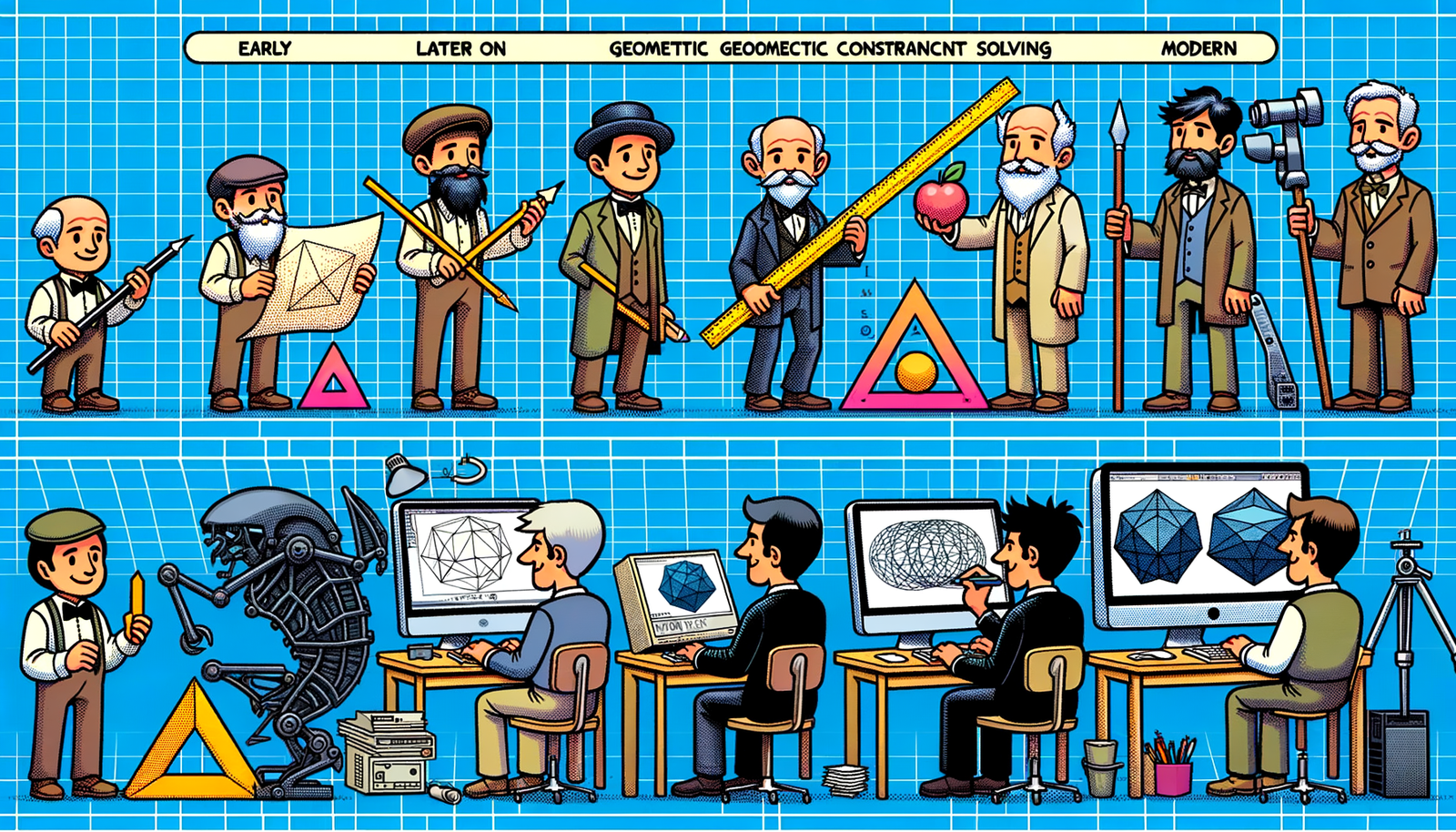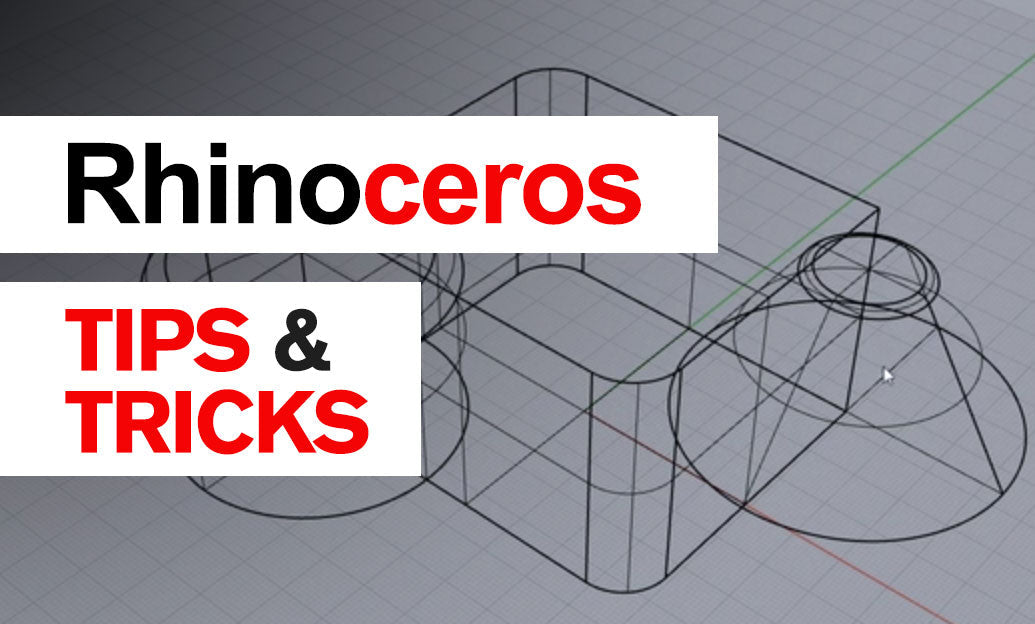Your Cart is Empty
Customer Testimonials
-
"Great customer service. The folks at Novedge were super helpful in navigating a somewhat complicated order including software upgrades and serial numbers in various stages of inactivity. They were friendly and helpful throughout the process.."
Ruben Ruckmark
"Quick & very helpful. We have been using Novedge for years and are very happy with their quick service when we need to make a purchase and excellent support resolving any issues."
Will Woodson
"Scott is the best. He reminds me about subscriptions dates, guides me in the correct direction for updates. He always responds promptly to me. He is literally the reason I continue to work with Novedge and will do so in the future."
Edward Mchugh
"Calvin Lok is “the man”. After my purchase of Sketchup 2021, he called me and provided step-by-step instructions to ease me through difficulties I was having with the setup of my new software."
Mike Borzage
Design Software History: Evolution of Design Software: From Early Innovations to Modern Marvels
June 13, 2024 6 min read


Introduction to Self-Healing Concrete
Definition and Concept
Self-healing concrete is a revolutionary material designed to address the limitations of traditional concrete, particularly its tendency to crack and degrade over time. This innovative material incorporates mechanisms that enable it to repair itself automatically when damage occurs, thus extending its lifespan and enhancing its durability. Unlike traditional concrete, which requires extensive maintenance and repair efforts, self-healing concrete can autonomously restore its structural integrity through various internal processes.
Several mechanisms underpin the self-healing capabilities of this concrete. Key mechanisms include:
- The use of bacteria and other microorganisms that produce limestone to fill cracks.
- The encapsulation of healing agents such as polymers and chemicals that release upon cracking.
- The integration of microcapsules containing adhesives and other bonding agents.
Early Innovations and Theoretical Foundations
The concept of self-healing materials emerged from the desire to develop more resilient and sustainable construction materials. Theoretical foundations for self-healing concrete were laid in the late 20th and early 21st centuries, driven by interdisciplinary research combining materials science, civil engineering, and chemistry.
Initial research and hypotheses about self-healing materials can be traced back to pioneering work by academics and industry experts who explored the potential of biological and chemical mechanisms for autonomous repair. Early innovations focused on understanding the fundamental processes that could enable self-repair in concrete structures, such as the ability of certain bacteria to precipitate calcium carbonate and the encapsulation of healing agents within the concrete matrix.
Key figures in the early stages of self-healing concrete research include scientists and engineers such as Henk Jonkers and organizations like Delft University of Technology. Their work set the stage for subsequent advancements and practical implementations of self-healing technologies.
Historical Development of Self-Healing Concrete
Pioneering Research and Milestones
The historical development of self-healing concrete is marked by several significant advancements and milestones. The timeline of these developments highlights the progress made from initial theoretical concepts to practical applications in the construction industry.
- Late 1990s: Early theoretical research on self-healing materials begins, with a focus on understanding the potential of biological and chemical mechanisms.
- Early 2000s: Experiments demonstrate the feasibility of using bacteria and encapsulated healing agents to induce self-healing in concrete.
- 2006: Henk Jonkers and his team at Delft University of Technology achieve a breakthrough by developing a bio-concrete that can repair itself using bacteria.
- 2010s: Continued research and development lead to the refinement of self-healing techniques and the first successful implementation of self-healing concrete in real-world structures.
- Present: Ongoing advancements in materials science and engineering continue to enhance the effectiveness and practicality of self-healing concrete technologies.
Key Researchers and Institutions
The development of self-healing concrete has been propelled by the contributions of numerous researchers and institutions. Among the most notable figures is Henk Jonkers, a microbiologist at Delft University of Technology, whose pioneering work on bio-concrete has garnered significant attention. Jonkers and his team developed a method for incorporating bacteria into concrete, enabling the material to self-repair cracks through the production of calcium carbonate.
Other key researchers include Victor C. Li at the University of Michigan, who has made substantial contributions to the development of Engineered Cementitious Composites (ECC) with self-healing properties. Institutions such as the University of Cambridge and Cardiff University have also played vital roles in advancing the understanding and application of self-healing concrete technologies.
The interdisciplinary collaboration among material scientists, civil engineers, and chemists has been crucial in overcoming the challenges associated with developing and implementing self-healing concrete. These collaborative efforts have led to the refinement of various self-healing mechanisms and the successful integration of these technologies into practical construction applications.
Technological Mechanisms and Methods
Microbial Self-Healing
One of the most fascinating and widely studied methods of self-healing concrete involves the use of bacteria and other microorganisms. This approach leverages the natural biological processes of certain bacteria to induce self-repair in concrete structures.
Microbial self-healing typically involves the incorporation of bacterial spores into the concrete mix. These spores remain dormant until cracks appear, at which point they become activated by the presence of water and nutrients. The bacteria then produce limestone (calcium carbonate), which fills and heals the cracks.
Specific microbial strains, such as Bacillus pasteurii and Bacillus sphaericus, have been identified for their ability to precipitate calcium carbonate. The effectiveness of microbial self-healing depends on the viability of the bacteria and the availability of nutrients and environmental conditions that support their activity.
Polymeric and Chemical Approaches
In addition to microbial methods, self-healing concrete can also be achieved through the use of polymers and chemical agents. These approaches involve the encapsulation of healing agents within the concrete matrix. When cracks form, the capsules rupture, releasing the healing agents that bond and seal the cracks.
Polymeric self-healing involves materials such as polyethylene and polyurethane, which can flow into cracks and solidify to restore the structural integrity of the concrete. Chemical approaches often utilize encapsulated adhesives, such as epoxy resins, that polymerize and bond the cracked surfaces upon release.
The effectiveness of these methods depends on factors such as the size and distribution of the capsules, the properties of the healing agents, and the environmental conditions. Polymeric and chemical self-healing technologies have been shown to be particularly effective in harsh environments where traditional maintenance methods may be challenging.
Comparative Analysis
A comparison of the different self-healing techniques reveals varying levels of cost, efficiency, and practicality. Each method offers unique benefits and drawbacks, making them suitable for different applications and conditions.
Microbial self-healing, for example, is highly effective in environments where the bacteria can thrive, providing a long-lasting and sustainable repair solution. However, the initial cost of incorporating bacteria and ensuring their viability can be relatively high.
Polymeric and chemical approaches, on the other hand, offer more immediate and predictable results. These methods can be tailored to specific applications and environmental conditions, but they may involve higher material costs and complexity in manufacturing the encapsulated healing agents.
Overall, the choice of self-healing technique depends on factors such as the specific requirements of the construction project, the environmental conditions, and the desired balance between initial cost and long-term benefits.
Impact on the Construction Industry
Applications
Self-healing concrete has found applications in various sectors of the construction industry, including infrastructure, residential, and commercial construction. The ability of self-healing concrete to autonomously repair cracks and extend the lifespan of structures makes it a valuable innovation in enhancing the durability and sustainability of buildings and infrastructure.
Economic and Environmental Impacts
The adoption of self-healing concrete offers significant economic and environmental benefits. From an economic perspective, self-healing concrete can reduce the need for frequent maintenance and repairs, leading to substantial cost savings over the lifespan of a structure. Additionally, the extended lifespan of self-healing concrete structures can result in lower overall material usage and reduced waste.
Environmentally, self-healing concrete contributes to sustainability by minimizing the need for resource-intensive maintenance activities and reducing the carbon footprint associated with construction and repair processes. The use of biodegradable and environmentally friendly healing agents, such as bacteria, further enhances the environmental benefits of self-healing concrete.
Future Prospects and Challenges
Looking ahead, the future prospects for self-healing concrete are promising, with ongoing research and development efforts aimed at refining and expanding the capabilities of this innovative material. Potential advancements include the development of more robust and versatile self-healing mechanisms, as well as the integration of self-healing technologies into a wider range of construction applications.
However, several challenges remain in achieving widespread adoption of self-healing concrete. Regulatory hurdles, such as the need for standardized testing and certification procedures, must be addressed to ensure the safe and reliable use of self-healing materials. Additionally, public perception and acceptance of self-healing concrete technologies will play a crucial role in their successful implementation.
Conclusion
Summary of Key Points
In summary, the development and application of self-healing concrete represent a significant advancement in the construction industry. From its early theoretical foundations to the pioneering research and practical implementations, self-healing concrete has demonstrated its potential to enhance the durability and sustainability of structures. The various technological mechanisms, including microbial and polymeric approaches, offer unique benefits and challenges, making them suitable for different applications and conditions.
Future Vision
As research and development continue to advance, the future of self-healing concrete holds exciting possibilities. Further innovations in self-healing mechanisms and materials science could lead to even more effective and versatile self-healing technologies, transforming the construction industry and contributing to more resilient and sustainable built environments.
Call to Action
To realize the full potential of self-healing concrete, continued research and investment are essential. Collaboration among scientists, engineers, policymakers, and industry stakeholders will be crucial in overcoming challenges and driving the widespread adoption of self-healing concrete technologies. By embracing this innovative material, we can create a more sustainable and resilient future for our built environment.
Also in Design News

Bluebeam Tip: Maximize PDF Security and Efficiency with Bluebeam Revu's Flatten Tool
December 02, 2024 1 min read
Read More
Design Software History: Evolution and Impact of Geometric Constraint Solving in CAD History
December 02, 2024 2 min read
Read More
Rhino 3D Tip: Enhancing Scale Modeling Accuracy in Rhino 3D: Essential Tips for Designers and Engineers
December 02, 2024 2 min read
Read MoreSubscribe
Sign up to get the latest on sales, new releases and more …


